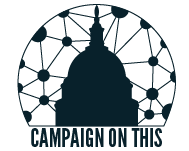Since the start of Occupy Wall Street in September of 2011, many Americans have heard the media, family or friends state that: It is the 1% who is ruining this country! They are taking all of our money! They should pay more taxes – their fair share! The Occupy movement has stated that there is a gross income and wealth inequality in the US, and that the “99%” are paying more than their fair share in comparison to those in the upper class. Their voices have been picked up by the media and have been broadcast throughout the country. Are their claims justified and do they have data to backup what they argue? Or has this become just another popular Ad Populum trend that has already died out?

“We Are the 99%” and the top 1% needs to contribute to society! Well known Nobel Prize winning columnist, Paul Krugman, states in his New York Times article “We Are the 99.9%” that the original Occupy slogan sets the bar too low. He references data from a Congressional Budget Office which only collected data up to 2005. According to the report, the inflation-adjusted after tax income of Americans in the middle of the income distribution rose 21%. The equivalent number for the .1% rose 400%. We decided to take Krugmans advice and look deeper into the 1%.
As we deconstruct this group we can see much larger gaps in the average income. The data above shows two dramatic increases in average income since 1979. For example, the top 0.1% (gold line) shows an increase of 383% in average income with the top .01% (green line) increasing over 685%! This kind of growth is astronomical!
The American Public and the political media has committed a logical fallacy. These kinds of fallacies are used to trick the unknowing into believing what they hear is the truth. The Ad Populum fallacy appeals to the general public’s prejudices and feelings rather than presenting the facts relative to the issues. The information presented here is not meant to sway you in one direction over the other. It is to display the facts based on the numbers. Use these numbers to form your own educated judgment with accurate data to back your claim. So, after the cards have all been laid down and there is nothing else to hide, do you want to continue to blame the 1% or dig deeper into what portion of the population is actually making the big money?



